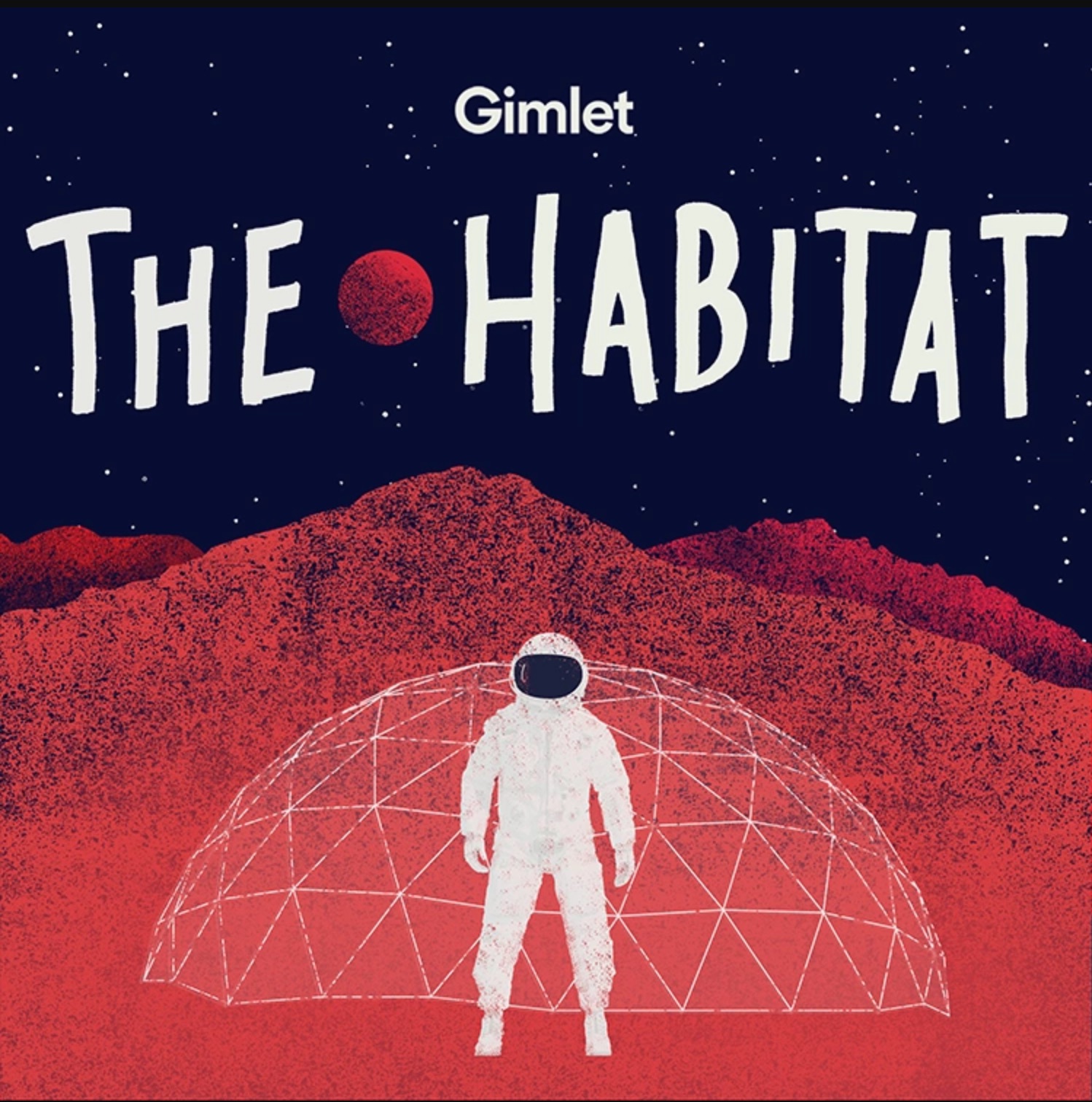Shadow the Crew of a Mars Simulation with 'The Habitat' Podcast

The new podcast "The Habitat" takes listeners into the dome of a simulated Mars mission, where six volunteers live for a year in isolation from the outside world in the lava fields of Hawaii.
"The Habitat," released April 18 in seven half-hour episodes by Gimlet Media, follows the six members of the HI-SEAS (Hawaii Space Exploration Analog and Simulation) IV mission, who emerged from their year of seclusion in August 2016. It was the first of the HI-SEAS missions, which are run by the University of Hawaii and funded through NASA, to last a full year, and tested how a team might be able to function in the confines of a "Mars" base with little access to the outside world.
The new podcast provides a fascinating, absorbing look at the changing dynamics in a group of people put into an extraordinary situation, moment by moment. Only by understanding that process can humans mount successful crewed missions to other worlds. [We Visited Mock Mars: Here's What It's Like to Live There]
"I learned about HI-SEAS basically right before this crew that I featured in the habitat went into the dome — I would say maybe two weeks before," Lynn Levy, the podcast's host, told Space.com. She had read about a different space simulation in Mary Roach's "Packing for Mars" (W. W. Norton & Co., 2010) and was surprised to find one about to begin. So she reached out to the HI-SEAS principal investigator, Kim Binsted, to come down for the beginning of the mission.
Levy got to shadow the six-person crew a little bit before the mission began, watching their relationships begin to form, but then they had to head into the dome. While they could connect with the outside world by email, no instantaneous communication was allowed — after all, on Mars it would take between 4 and 24 minutes, depending on the planet's location compared to Earth's, for a message to make it one way. To track the highs and lows of a year in "space," Levy left a few voice recorders behind with the crew.
Through those recorders, Levy — and the listeners to "The Habitat" — track the crewmembers as they settle into their lives in the dome and learn to live with one another.
"At one point, somebody recorded a whole day for me; that was pretty awesome," Levy said. "Something really wonderful would happen, and then it would be like 45 minutes of chewing. Which was nice, because it made me feel like I was there. It was all part of the process."
Get the Space.com Newsletter
Breaking space news, the latest updates on rocket launches, skywatching events and more!
Levy pored through more than 200 hours of audio to accurately convey the story of the crewmembers, the relationships they form and the conflicts that arise during the mission. In fact, she told Space.com, all that listening brought her surprisingly close to the crew and invested in their daily travails.
That closeness also manifested in a more visceral way. "I would have dreams that I was being launched into space against my will and wake up — I won't say screaming, but definitely wake up sweating, because I ended up feeling so much like I was in there with them," she said.

Through the tapes, listeners learn about the daily lives of the crew, including preparing space food, laboriously fixing clogged toilets and even going on spacesuited exploration of nearby lava tubes. And along the way, listeners hear the crew bond, fight and (maybe) form intimate relationships.
All the while, they're dealing with the complexities of life on "Mars." One example that doesn't appear in the podcast, Levy said, is how they received deliveries: The crew is not supposed to see or hear other humans, to better simulate the psychology of life on Mars, so when a delivery is coming, they would all put on noise-canceling headphones and close the windows. They'd pretend the truck driving up, and person dropping the supplies in front of the airlock, were robots, and would go out only to grab the supplies when the coast was clear.
On Mars, and on simulated Mars, "everything is a dozen extra steps to get an approximation of what you could do easily in one step on Earth," Levy said. "Everybody, take care of Earth, because everything is much harder in space."
"The Habitat" drives that concept home as it offers a thoughtful look at one of the most crucial and hard-to-control aspects of any crewed space mission: the crew.
"What I hope is that people come away with a little bit of a different image of what an astronaut is," Levy said. "I always thought of an astronaut as this incredibly heroic character, and you always picture them in the spacesuit with the gleaming visor."
"But I think it's much more interesting to think about people as real and flawed and still, nonetheless, capable of greatness," she added.
Visit "The Habitat" podcast here to find out what it's like on a simulated Mars mission.
Email Sarah Lewin at slewin@space.com or follow her @SarahExplains. Follow us @Spacedotcom, Facebook and Google+. Original article on Space.com.
Join our Space Forums to keep talking space on the latest missions, night sky and more! And if you have a news tip, correction or comment, let us know at: community@space.com.

Sarah Lewin started writing for Space.com in June of 2015 as a Staff Writer and became Associate Editor in 2019 . Her work has been featured by Scientific American, IEEE Spectrum, Quanta Magazine, Wired, The Scientist, Science Friday and WGBH's Inside NOVA. Sarah has an MA from NYU's Science, Health and Environmental Reporting Program and an AB in mathematics from Brown University. When not writing, reading or thinking about space, Sarah enjoys musical theatre and mathematical papercraft. She is currently Assistant News Editor at Scientific American. You can follow her on Twitter @SarahExplains.